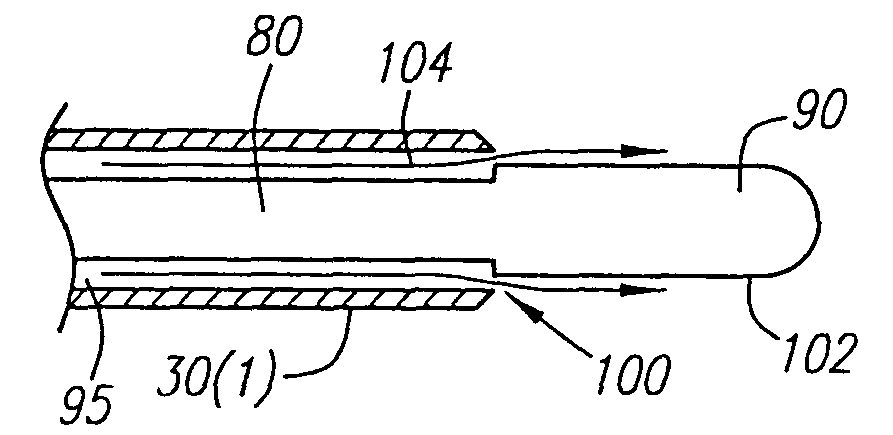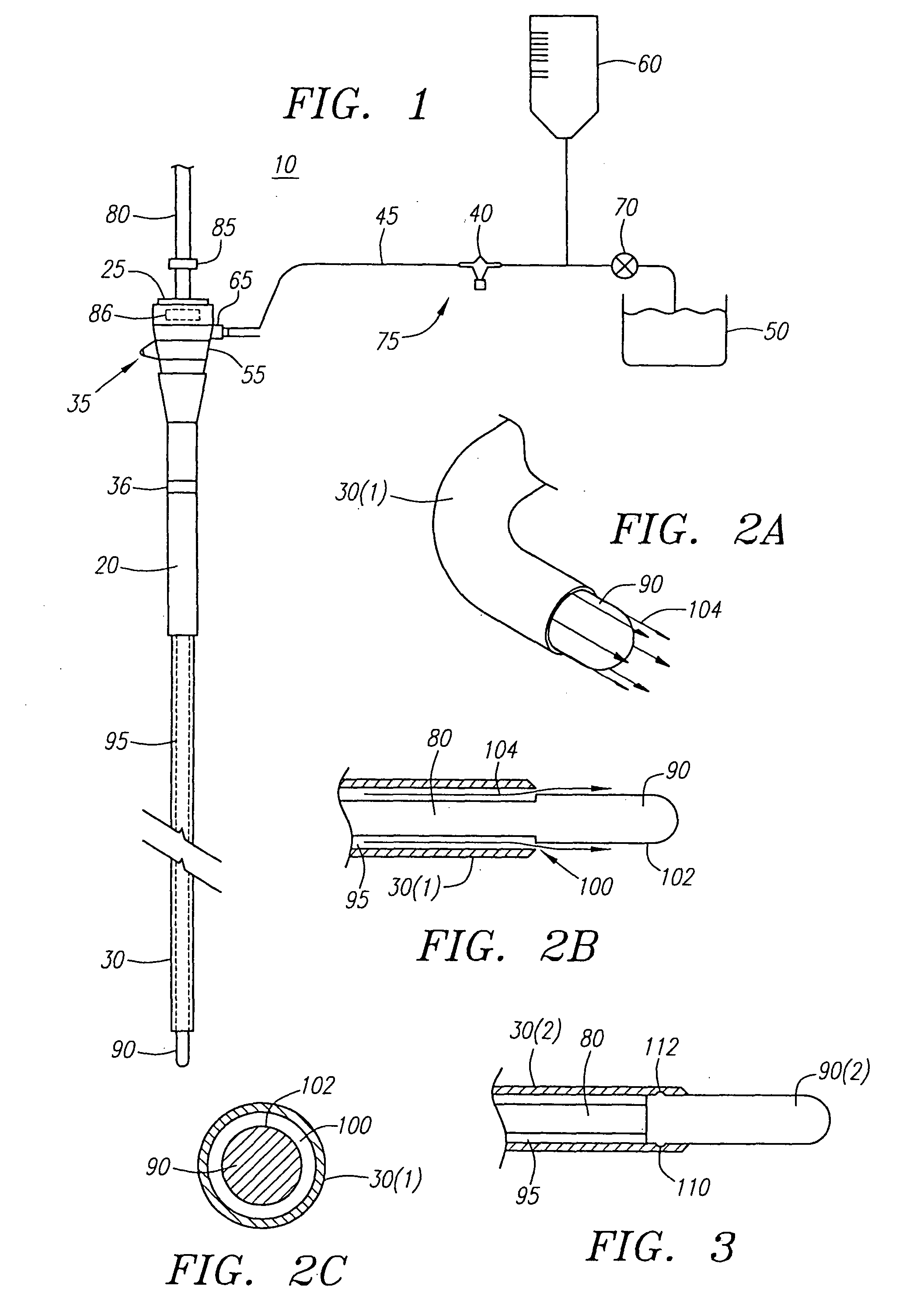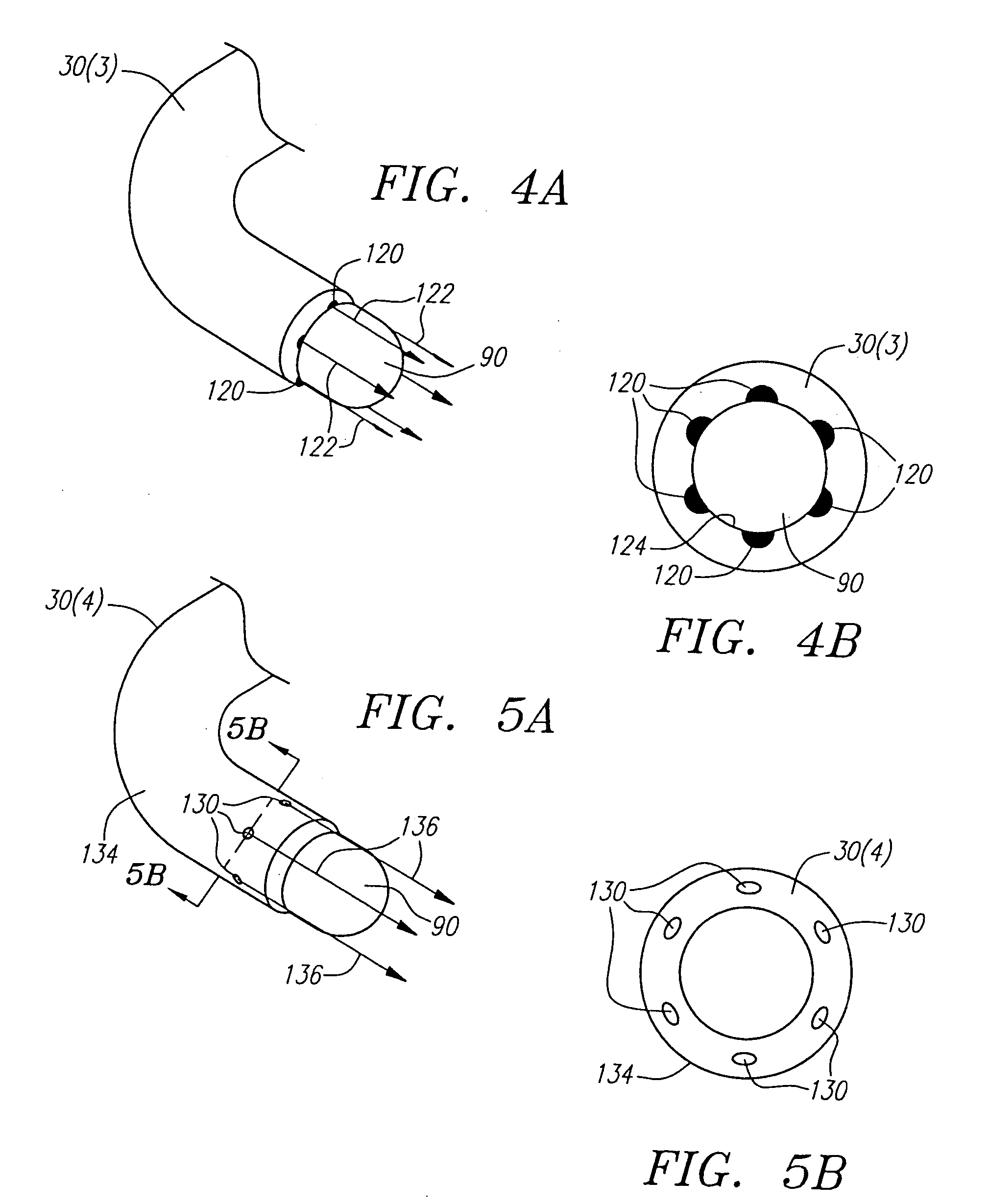Irrigation sheath
a technology of irrigation sheath and electrode, which is applied in the field of medical devices, can solve the problems of reducing the effectiveness of the ablation procedure, embolic hazards, and lesions at the targeted tissu
- Summary
- Abstract
- Description
- Claims
- Application Information
AI Technical Summary
Benefits of technology
Problems solved by technology
Method used
Image
Examples
Embodiment Construction
[0027] The present invention provides for an irrigated sheath system that is capable of delivering an irrigation fluid to the tip of a medical catheter (e.g., an ablation / mapping catheter) in a more efficient manner. With respect to ablation catheters, the present sheath system provides an increased fluid flow to the ablation electrode, thereby providing many advantages. For example, the efficient fluid flow provides for larger, longer and deeper lesions during the ablation process, as compared to other prior art cooled ablation systems. This becomes more significant when treating atrial flutter, which requires deep lesions in the isthmus, or for treating ventricular tachycardia, which requires deep lesions in the ventricles. In comparison to other prior art cooled ablation systems, the incidences of tissue charring, coagulation on electrodes, and popping are reduced, thus making the ablation process more safe. The present sheath system also reduces the number of RF applications, th...
PUM
 Login to View More
Login to View More Abstract
Description
Claims
Application Information
 Login to View More
Login to View More - R&D
- Intellectual Property
- Life Sciences
- Materials
- Tech Scout
- Unparalleled Data Quality
- Higher Quality Content
- 60% Fewer Hallucinations
Browse by: Latest US Patents, China's latest patents, Technical Efficacy Thesaurus, Application Domain, Technology Topic, Popular Technical Reports.
© 2025 PatSnap. All rights reserved.Legal|Privacy policy|Modern Slavery Act Transparency Statement|Sitemap|About US| Contact US: help@patsnap.com



